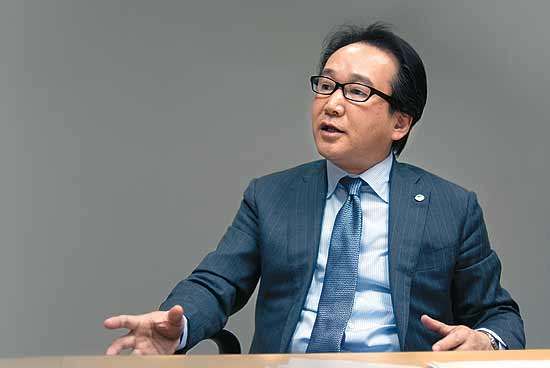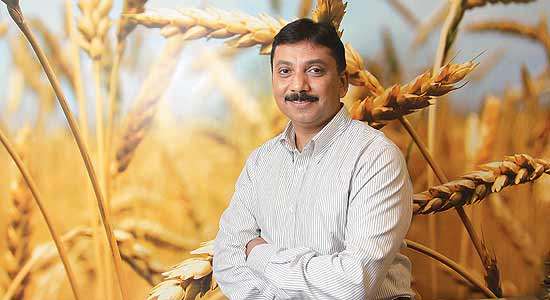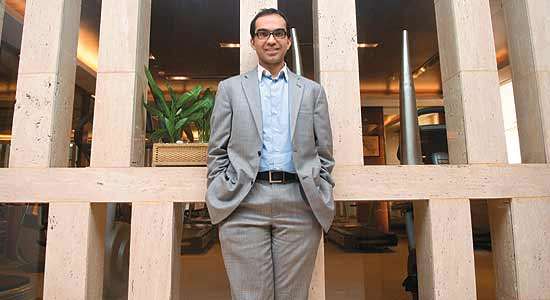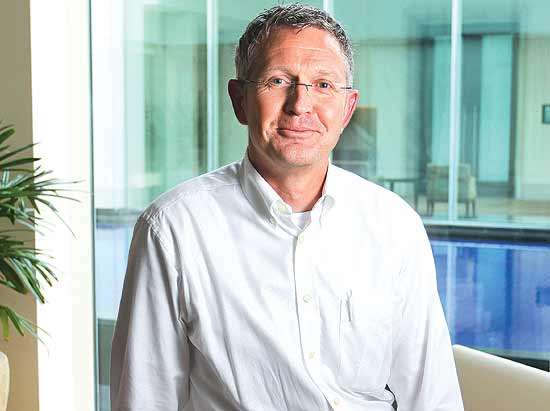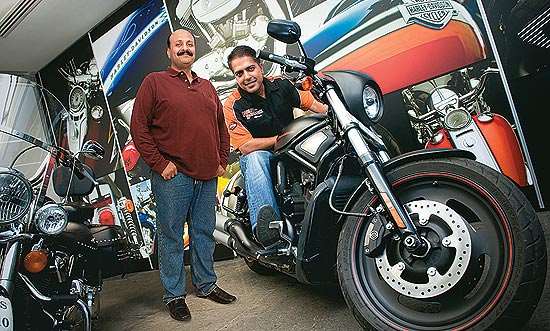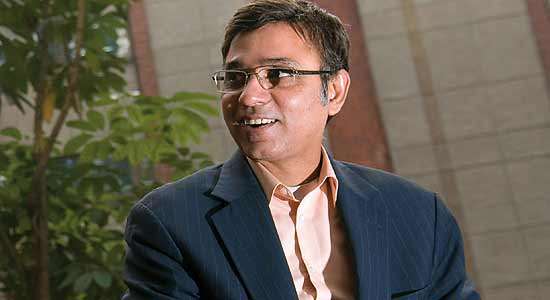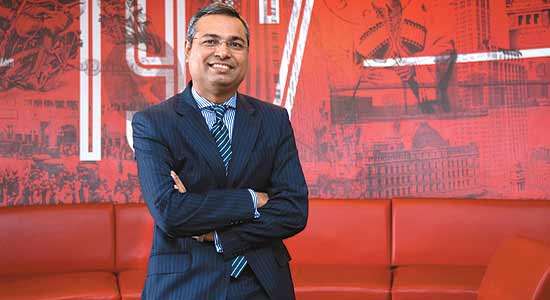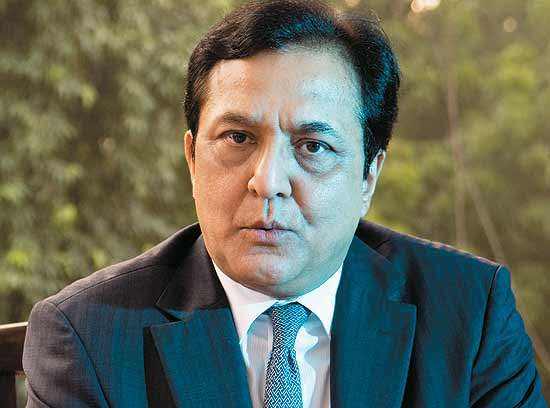Hitachi India has business interests ranging from social infrastructure and information and telecommunications systems to digital media and consumer products. Ichiro Iino, Managing Director of Hitachi India, speaks to Dr Amit Kapoor, Honorary Chairman at the Institute for Competitiveness, about the diversified conglomerate’s focus on India and the future shaped by iPad applications. Excerpts:
Tell us something about your company.
Our company was founded in 1910 and is listed on the New York Stock Exchange today. We celebrated our 100th anniversary last year and have around 360,000 employees and 45,000 stockholders worldwide. We have a wide spectrum of products information and telecommunication systems, power systems, social infrastructure, industrial systems, electronic equipment, construction machinery, high functional material and components, automotive systems, digital media, consumer products and financial services. We have a lot of subsidiaries in diverse fields. The entire revenue for the fiscal year ending March 2011 was recorded at $112 billion. The largest chunk of this business comes from the information and telecommunications systems. But we still have our power systems, social infrastructure and industrial systems. Though a majority of the revenue still comes from Japan (57%), we’re trying to achieve more than 50% from the overseas market. In June, the president Hiroaki Nakanishi said we are going to be six regional operations; Americas, Japan, China, Asia, India and Europe.
When you say India regional office, does it include other nations as well?
It includes Nepal, Bhutan, Bangladesh and Sri Lanka. Our founder, Namihei Odaira, observed that most of the heavy machinery was made in Europe and the US while he wanted to design and produce pure Japanese machines in his company. So he focused on real Japanese oriented technology. In the early days there were a lot of mergers and acquisitions to grow and expand the business.
Our business comprises advanced materials and key devices, which include power devices, power electronic products, motors and electrical devices. We will expand the business into IT, power, industrial, transportation and urban development systems. This is our corporate branding policy.
Though Hitachi India was established in 1997, we have an 80-year long history in the sub-continent. We started with shipping fans, pumps, steel turbine and hydro turbines. Recently, we introduced home appliances and have around 21 subsidiaries and affiliates across the country under our brand.
In the case of manufacturing facilities, Gujarat is the base for air conditioners and refrigerators and Chennai for turbines and boilers. All the other products are imported from Japan. And for services, Mumbai is the station. It is where our logistics hub (Flyjac Logistics) is located. We also have a hotel in Delhi. More than 70% of our customers are from other Japanese companies apart from the Japanese Embassy. In June, Hitachi announced the setting up of its sixth regional headquarter in India in order to meet the growing demand here.
In India, the consumer is moving towards advanced technology and feature rich products. This is the trend globally, too.
Your tagline is “inspire the next”. What does that mean?
Broadly, we want to address the needs of the future. We anticipate what’s coming next and then create the desired products thus providing appropriate solutions to the problems of people.
How do you assess what the consumer requires 10 years down the line?
That is going to be based upon relentless marketing and servicing talks with our users, customers, industry partners and stakeholders. This will aid in capturing the needs, requirements and demands emerging in the future. We have the materials and the technology, but it is still not commercialised. So, we are commercialising these products and are available at an affordable price.
When you say social, innovational and infrastructural businesses, what business model are you employing?
It depends on the market but we are not looking simply at selling the product. We definitely provide services to our consumers. In India, we manufacture and design products that meet the uniqueness of the requirements and demands of the consumers. For example, we are in discussions on the datacentre business where we will be part of a company running an operation that provides services from the datacentres.
What is your value proposition for a B2C consumer? How does it differ from a B2B one?
We will provide reliability, quality and technology not only to the individual consumers [B2C] but also to the industrial ones [B2B]. This is something we have been doing consistently for our air-conditioners.
On what grounds do these two set of consumers diverge?
In the case of B2C, we capture as many voices from the market as possible and then carefully decide the moderate system. You have to dig into their problems and focus on the needs of a single customer. So it’s a different approach.
B2B is about segmenting too. In the case of Tata Steel, we produce a special type of steel required for their latest automobiles, thus providing large controlled automation systems and not standard products. So that is the technology innovation. One has to identify one’s strengths first and then find the market that utilises that strength. As a company we have been demonstrating technology, reliability, quality and innovations.
How different is India from China?
I think India is a democratic country like Japan. If I talk about the industries, there is no big difference because the whole market is global and competitive right now. Similarly, there is no major difference between the Chinese and Indian customer industry. Both need speedy decisions to capture the market as fast as possible and to grow faster and bigger. From the consumer standpoint, I do not see a big difference in terms of features required for TVs, washing machines and air conditioners. So, from the viewpoint of the supplier and provider of services, I don’t see any major difference between the two countries.
But, from the position of the MD of the company, I look at India as a very high potential, interesting and challenging country, where we can design and manufacture suitable products that fit the market.
So do you look at India as a manufacturing hub?
Yes, I do because we have to make our product very competitive in the market. Japan sometimes requires lots of gadgets and additional functions, which add to our workload of simplifying and reducing the costs. But we can address the straightforward market needs of the product design and manufacture in this country.
How will Indian consumers change?
They’re gradually moving towards advanced technology and feature rich products. This is becoming the trend in the global economy.
Do you anticipate your business getting affected by devices like the iPad, since you have a predominant focus on the information and telecom businesses?
We are a very strong provider to the telecommunications service, SoftBank, in Japan. SoftBank is the only carrier of the iPad in Japan. So we have benefited from iPad. Our business is pushed and grown via iPad. So in that respect, there’s no big negative impact on us.
The world is going to get more mobile with cloud computing, data centres and storage. As a consequence, your data centres will become more important. What is going to be your value proposition in that business?
We have just stepped into that area and are looking at a slightly different model in India from the one in Japan. We have a data centre in Japan, but we’re trying to start that with a third party in India as the company is also interested in undertaking some business other than selling equipment.
From the data centre business, we have knowledge that we can use and sell; something we are doing only in Japan. India will have increasing demand for electronic data from now on as opposed to Japan, which has already matured. So we see a lot of opportunity for us here as a newcomer.
Government business is a test of patience. But I hope the process will improve and help the Indian economy and industry to grow faster.
There is going to be a lot of convergence in businesses because of technology, telecom and services. Do you think telecom is going to impact healthcare businesses in any way? What kind of models are likely to emerge in the future?
We are not strongly addressing telecommunications right now. I think telecom is going to impact healthcare businesses because data transmission is going to be faster. And as you know, the doctor carries the iPad everywhere inside the hospital, receiving all the data from the centre.
Are you doing something on eco-cities?
We are addressing the issue of energy efficiency. The city will need energy, so we are addressing eco-friendly energy power generation, or high-energy efficient devices and equipment to be used inside a city.
You are a fairly diversified group. How do you choose your business?
It depends upon the market. We will have to be one of the stakeholders in each market and the customers will decide our position. But we would like to be one of the strong stakeholders in the market.
How do you keep your businesses intact all over the world?
The company is consolidating its international assets currently. We have more than 900 companies globally and are trying to group them in order to increase Hitachi’s strengths in a simple and faster way.
Where do you see your Indian business going in the future?
Hitachi India is a $1 billion business and is expected to double in the next couple of years. To do this we are building new factories of turbine generators and boilers. We are making an investment in a power electronics firm located in Gujarat that will produce a large number of power turbines. We are also investing in the Swiss suppliers of the Indian Railways, signal systems, electric locomotives, EMUs, and monorail.
What made you start a manufacturing base in India?
There are two reasons. One, if you look at power systems, National Power has a regulatory requirement that it has to be an Indian company. We have to partner with an Indian company so that we qualify. Secondly, competitive markets enable us to design and manufacture the most competitive products and since India’s market is one of the most competitive markets price-wise, we decided to design and manufacture products in India.
What is going to be your biggest challenge in India?
Government business is a test of patience. But I hope the process and bureaucratic protocol will improve and help the Indian economy and industry to grow faster. The second challenge is to work harder to expand our R&D capabilities in India.
How do you define strategy?
Basically, strategy is a function of your position in the market. So we are looking at projects like railways, hydro turbine and mega projects to lay the foundation of our business. Our strategy is to make the infrastructure project business successful.
How do you define leadership?
Leadership is a synthesis of three important factors: vision, a facilitated key model and a set of motivated people.
You are constantly innovating and you must be typically removing certain sets of products and introducing their newer versions? Doesn’t that make your own products obsolete?
We are responding to market demands. Like shifting from DC to AC motors.
So, the reason for your success is because you quickly bringing an idea to the assembly line?
Yes, because we’re addressing quality and reliability in operations. We cannot do perfect things in the whole market. We have some advantages in certain areas but not all. So we will be more inclined to the larger industrial area.
Evolution
First wave
- Established in 1910 as a manufacturer of electric motors.
Second wave
- Diversified business; social infrastructure to home appliances, industrial systems to services. Presence in four geographical regions.
Third wave
- Entry in the services sector. Expected to be six regional operations: Americas, Japan, China, Asia, Europe and India. Committed to meeting the needs of the future.
The Strat Speak interaction was published with Outlook Business on October 29, 2011.

